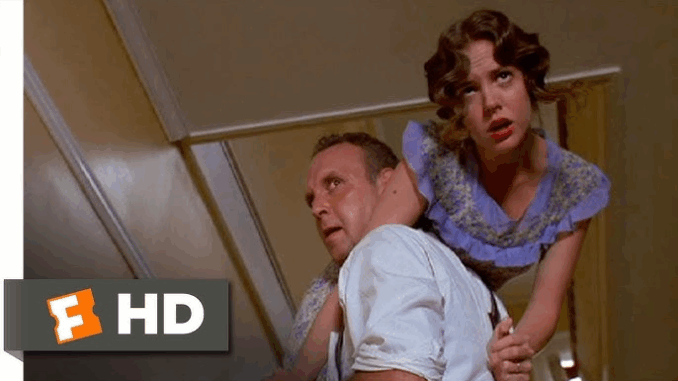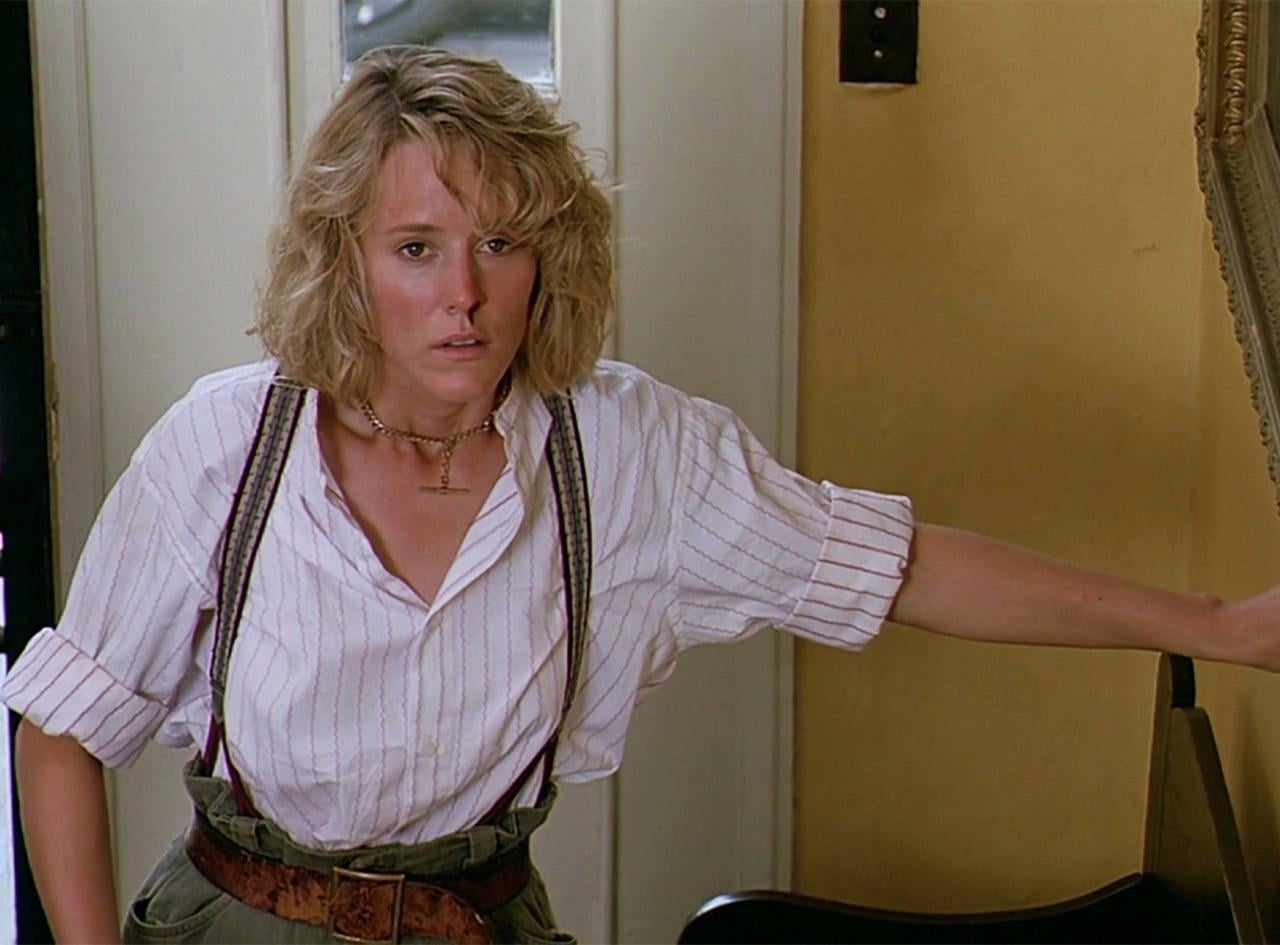
Every once in a while, cinema gifts us with a scene so powerful it transcends time. In Fried Green Tomatoes (1991), one such moment arrives when Idgie Threadgoode drives to rescue her closest friend, Ruth Jamison, from her abusive husband, Frank Bennett.
It’s not just an act of bravery — it’s a declaration of love, friendship, and rebellion against a world that tries to silence women. Idgie’s fearless intervention isn’t about being a savior; it’s about standing beside someone when no one else will.
Let’s dive deep into this unforgettable sequence exploring its raw emotion, behind-the-scenes magic, and the enduring feminist message that continues to inspire audiences today.
The Build-Up: When Friendship Becomes a Lifeline
Before the rescue, Ruth is trapped in a violent marriage. Frank Bennett, her husband, is cruel and controlling — a man who sees her as property, not a partner. Meanwhile, Idgie, known for her wild spirit and defiant nature, refuses to stand by and watch her best friend suffer.
The bond between these two women is pure and unbreakable. Ruth’s pain becomes Idgie’s pain, and that empathy sets the stage for one of the most emotional and empowering moments in film history.
The Scene: Idgie’s Daring Drive Into Danger
The rescue begins with tension in the air. Idgie doesn’t hesitate — she jumps into her car and drives straight to Ruth’s house. The moment she steps out, the audience feels the shift: this isn’t just about confrontation, it’s about liberation.
Idgie storms into the house, her voice steady but fierce. Frank tries to intimidate her, but Idgie’s presence is unwavering. She tells Ruth, “You’re coming with me.” That simple sentence carries a weight of defiance, love, and protection.
Ruth, trembling but resolute, finally steps forward. Together, they walk out — leaving behind years of fear and control.

Behind the Scenes: Mary Stuart Masterson’s Raw Commitment
What made this scene feel so real? Mary Stuart Masterson’s dedication.
Playing Idgie Threadgoode, she performed nearly all the action sequences herself, without stunt doubles. She wanted every glare, every movement, every line to be authentic. “Idgie’s bravery had to come from a real place,” Masterson once said. “It wasn’t about physical strength — it was about emotional courage.”
The result was stunning. Viewers could feel Idgie’s pulse racing, see her heart breaking, and believe in every ounce of her determination.
The Director’s Vision: Real Emotion Over Spectacle
Director Jon Avnet approached this scene with sensitivity and intensity. He didn’t want it to feel like a Hollywood action moment — he wanted it to feel human.
Instead of fast cuts and explosions, he used long, emotional takes that let the audience see the fear, anger, and love in Idgie’s eyes. This approach made the scene more powerful — because the real battle wasn’t physical, it was emotional.
The Symbolism of the Rescue
This scene isn’t just a dramatic moment — it’s layered with meaning.
Freedom from Oppression
When Idgie helps Ruth leave, it represents breaking the invisible chains that bind so many women. It’s a bold statement about choosing freedom over fear.
Courage Over Conformity
Idgie defies not just an abusive man, but the entire social structure of her time. In the 1930s Deep South, women were expected to be obedient and silent. Idgie’s rebellion challenges that expectation completely.
Friendship as Feminist Resistance
The heart of this scene is friendship — fierce, protective, and loyal. It’s a love story without romance, built on mutual respect and courage.
Feminist Undertones: Women Standing for Each Other
In the early 90s, when Fried Green Tomatoes was released, mainstream Hollywood rarely showcased women as protectors. But Idgie’s rescue flipped that narrative.
She wasn’t waiting for a man to save Ruth. She was the savior — not out of heroism, but empathy. The scene quietly screams a powerful truth: women can be each other’s heroes.
Why Idgie’s Courage Still Resonates Today
Even decades later, this scene speaks volumes. Around the world, countless women still face domestic violence and manipulation. Watching Idgie confront an abuser feels like watching justice finally take form — even if just for a few minutes.
It reminds viewers that silence can be deadly, but solidarity can be life-saving. And sometimes, the most revolutionary act is simply standing by someone who needs you.
Mary Stuart Masterson and Mary-Louise Parker: On-Screen Chemistry
The chemistry between Masterson (Idgie) and Mary-Louise Parker (Ruth) is one of the film’s most captivating elements. Their connection feels real — layered with affection, tension, and deep emotional understanding.
Both actresses brought authenticity to their roles, ensuring that every shared glance and word carried emotional weight. Their bond in this scene transformed what could have been a simple rescue into an unforgettable moment of trust and liberation.
Breaking Gender Stereotypes
Idgie doesn’t fit the mold of a “typical” woman of her time. She dresses in trousers, works outdoors, and speaks her mind. But instead of being portrayed as an outcast, she’s depicted as free.
Her rescue of Ruth not only breaks social norms but redefines what strength looks like — proving that compassion and courage are not masculine or feminine, but human.
The Emotional Depth of Ruth’s Transformation
Ruth’s decision to leave Frank isn’t just about escaping violence; it’s about reclaiming her identity. The moment she steps out that door, she becomes more than a victim — she becomes a survivor.
This transformation, guided by Idgie’s unwavering support, mirrors the real-life journey of countless women who find the courage to walk away from abuse.
Critical Reception: A Scene That Moved Millions
Critics and audiences alike praised the rescue scene for its emotional honesty. It was described as “one of the most empowering sequences of 90s cinema.”
Feminist scholars often cite it as a prime example of storytelling that champions female agency without relying on traditional romantic or male-driven narratives.
Cinematic Choices That Amplified Emotion
The cinematography plays a huge role in making this moment unforgettable. Notice how the lighting grows warmer once Ruth steps outside — symbolizing hope and freedom.
The silence that follows their departure says more than words ever could. It’s a moment of peace after chaos — a breath of liberation.
Cultural Legacy: Why This Scene Still Matters
Over 30 years later, the image of Idgie standing fearlessly in Ruth’s doorway remains iconic. It’s printed on posters, quoted online, and referenced in feminist film discussions.
The scene’s message — that real strength lies in compassion and loyalty — continues to inspire new generations of viewers.
Life Imitates Art: Real Women Inspired by Idgie
Many fans have shared stories of how this scene gave them the strength to stand up to abuse or support a friend in need. That’s the power of great storytelling — it transcends fiction and transforms lives.
The rescue of Ruth by Idgie in Fried Green Tomatoes is more than a cinematic highlight — it’s a tribute to the bravery of women who refuse to let fear define them.
Through Mary Stuart Masterson’s fearless performance and the film’s emotional storytelling, the scene becomes a timeless reminder that courage doesn’t always roar. Sometimes, it simply says, “You’re coming with me.”
This moment, both powerful and tender, teaches us that true friendship means standing up, showing up, and never giving up — no matter how dangerous the fight.
FAQs
1. What makes Idgie’s rescue scene in Fried Green Tomatoes so iconic?
It represents courage, female solidarity, and the refusal to accept abuse — themes rarely portrayed so boldly at the time.
2. Did Mary Stuart Masterson perform her own stunts?
Yes. She performed nearly all the physical actions herself to ensure the scene felt genuine and emotionally charged.
3. Was the rescue scene based on a real event?
No, but it draws inspiration from real struggles women face in abusive relationships, making it deeply relatable.
4. How does this scene contribute to the film’s feminist themes?
It showcases women protecting each other, emphasizing strength through compassion rather than violence or dependence on men.
5. Why does this moment still resonate today?
Because it reminds viewers that bravery can take many forms — and that helping someone escape oppression is one of the most powerful acts of love.
